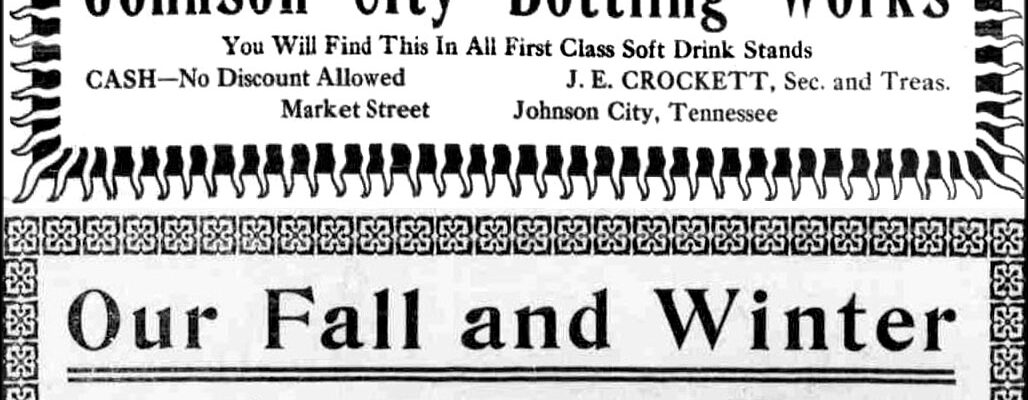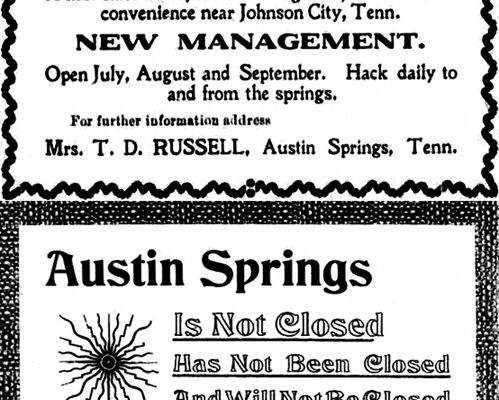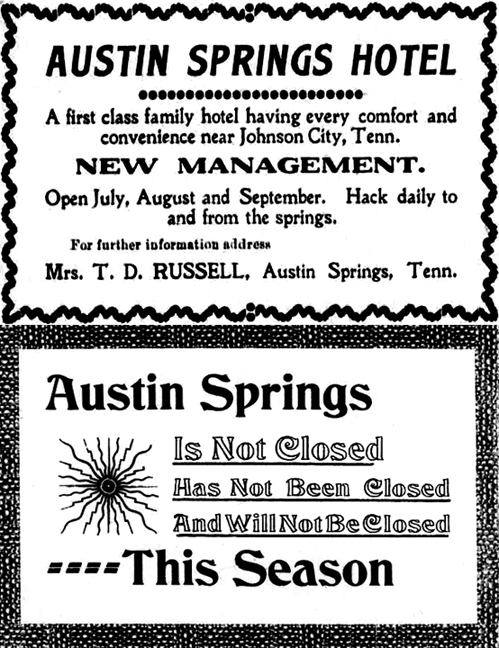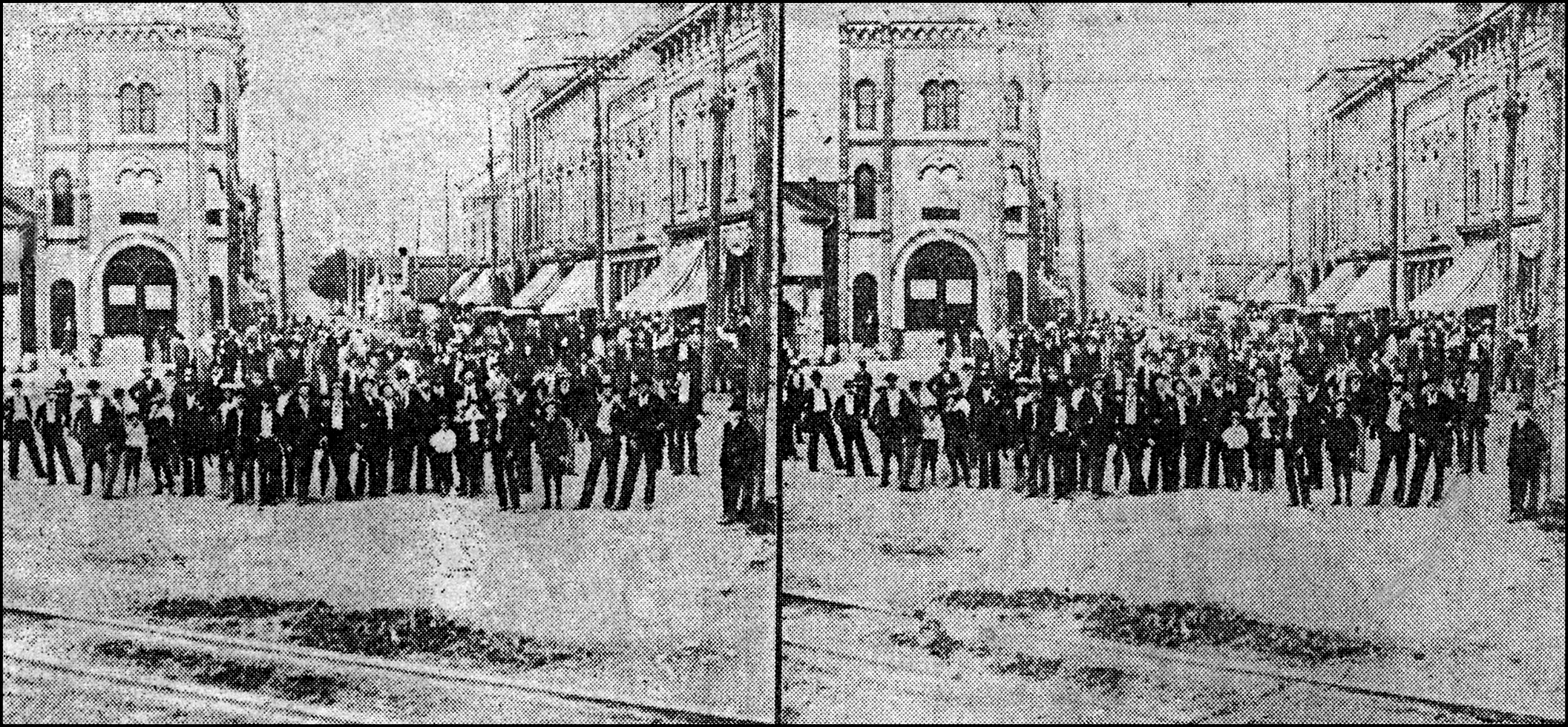The 1908-09 Johnson City Directory identified 60 streets within the confines of the city. Note in the list below that 10 parallel avenues bare the designation “Carnegie,” as part of The Carnegie Land Company (but that is another story).
These roads (and today’s names) were First (Millard/Railroad), Second (Fairview), Third (Myrtle), Fourth (Watauga), Fifth (Unaka), Sixth (Holston), Seventh (Chilhowie), Eighth, Ninth and Tenth. For whatever reason, the latter three were not renamed after the Carnegie empire collapsed.
The street locations in the list below are unique, generally specifying how many streets a particular one location lies from another major street. For instant, the first one, Afton, is south of the East Tennessee and Western North Carolina Railway and also the fifth street east of Roan.
Glance over the list below to see if the streets where you reside or have lived were in existence in 1909. All designated roads are streets; avenues are so noted:

Two Old Advertisements in Johnson City in 1908
A: Afton (south from ET&WNC Railroad, 5th east of Roan), Ash (West from Roan, between Cherry and Walnut).
B: Baxter (north from So. Ry., 4th east of Roan), Boone (North from Main, 1st west of Roan), Buffalo (south from Main, 2nd west of Roan).
C: Carnegie (On South and Western Railroad east of the city), Cherokee Road (west from Buffalo, 1st south of Chestnut), Cherry (east and west of Roan, 2nd south of Main), Chestnut (east and west of Roan, 9th south of Main), Commerce Ave. (southeast from east end of Maple).
D: Division (south from East Main, 1st east of Roan).
E: Eighth Ave. (east and west from Roan, 2nd north of Holston Ave.), Elm (north from So. Railroad Depot, 2nd east of Roan), Elmo (west from W. Watauga Ave., 3rd north of Main), Ernest (south from Main, 3rd west of Roan.
F: Fairview Ave. (east and west from Roan, 4th north of Main), Fifth Ave. (Carnegie), Fourth Ave. (Carnegie), Fulton (west from Whitney, 1st south of Main).
G: Grover (south from ET&WNCRR, 3rd east of Roan), Hamilton (west from Whitney, 2nd south of Main).
H: Harris Ave. (east and west from Roan, 6th north of Roan), Henry (south from ET&WNC, 4th east of Roan), Holston Ave. (east and west from Roan, 9th north of Main), Humboldt (south from W. Main, 1st west of railroad).
I: Ivy (west from Roan, north of Holston Ave.).
J: Jobe (east and west from Roan, 1st south of Main).
K: King (east and west from Roan, 2nd north of Main).
L: Lamont (west from Whitney, 3rd south of Main), Locust (east and west from Roan, 7th south of Main).
M: Main (east and west from public square, main business street of city), Maple (east and west from Roan, 5th south of Main), Market (east and west from public square, 1st north of Main), Maupin (south from So. Ry), Millard (east and west from Roan , 3rd north of Main), Montgomery (north from Main, 2nd west of Roan), Myrtle Ave. (east and west from Roan, 5th north of Main).
N: New (North of So. Ry., 6th east of Roan), Ninth Ave. (east and west from Roan, 3rd north of Holston Ave).
O: Oak (north from So. Ry., 3rd east of Roan).
P: Pine (east and west from Roan, 6th south of Main), Poplar (east and west from Roan, 8th south of Main), Public Square (along So. Ry. between Main and Market).
R: Railroad (parallel to So. Ry. tracks), Roan (north and south from Main, 1st east of Spring, the dividing line for most streets running east and west).
S: Second Ave. (Carnegie), Seventh Ave. (east from Roan, 1st north of Holston Ave.), Sixth Ave. (Carnegie), Spring (south from Main, 1st west of Roan), Stuart (north from So. Ry,), 5th east of Roan), Summer (south from west Main, 3rd west of Railroad).
T: Tenth Ave. (east and west from Roan, 4th north of Holston Ave.), Third Ave. (Carnegie).
U: Unaka Ave. (east and west from Roan, 8th north of Main), Walnut (east and west from Roan, 4th south of Main).
W: Watauga Ave. (east and west from Roan, 7th north of Main), Wellborn (Welbourne?) (north from So. Ry, 1st east of N. Roan), Whitney (south from 301 W. Main, 2nd west of Railroad), Willow (west from Watauga Ave., 2nd north of W. Main), Winter (south from W. Main, 4th west of Railroad).
You probably noticed that several streets no long exist: Fulton, Humboldt, Stuart, Summer, Willow and Jobe.





